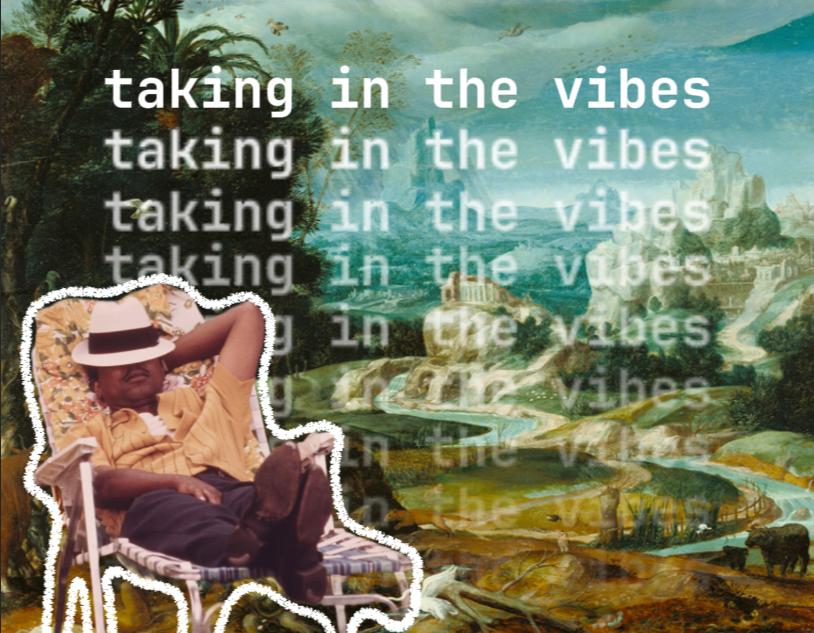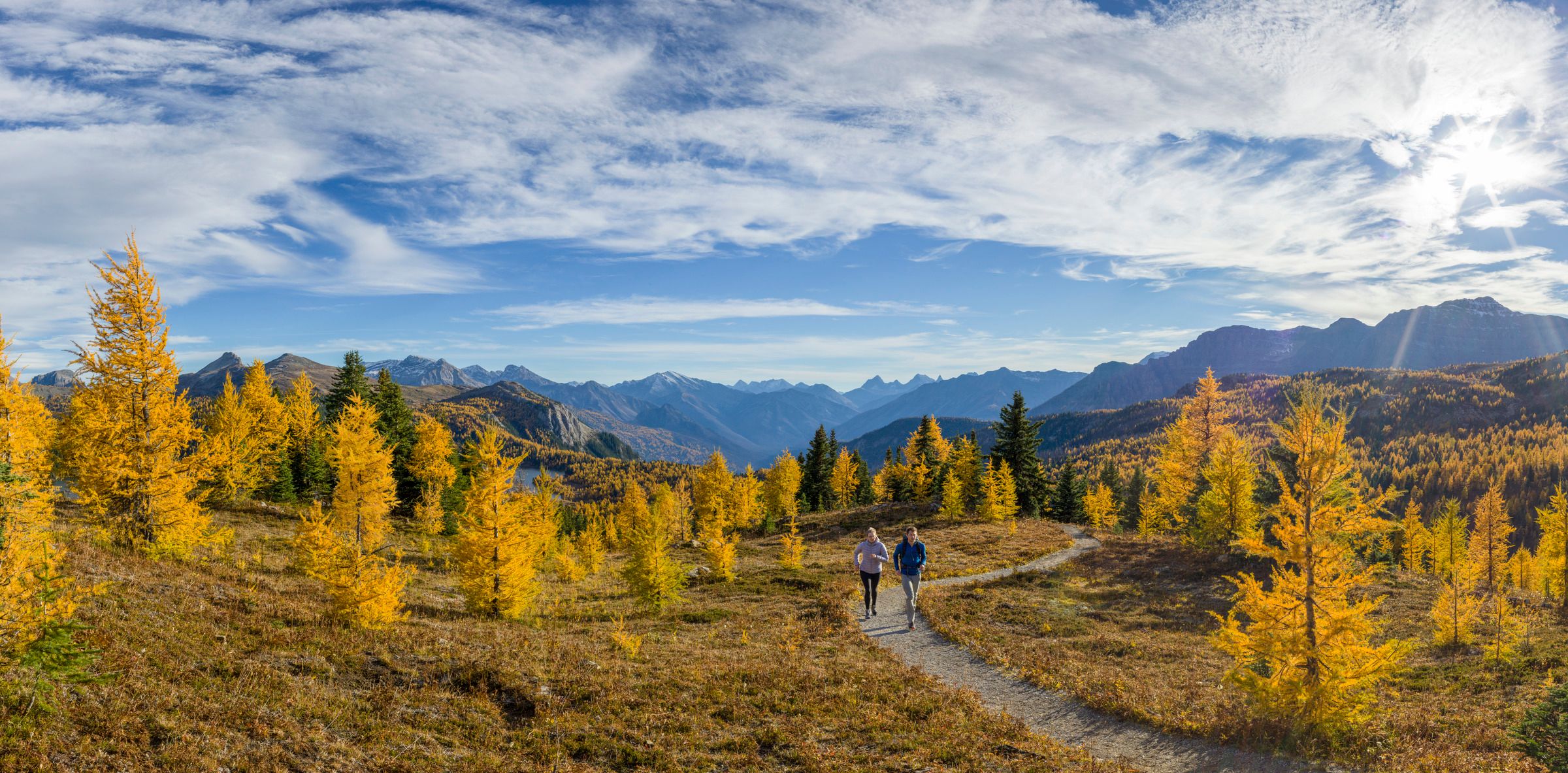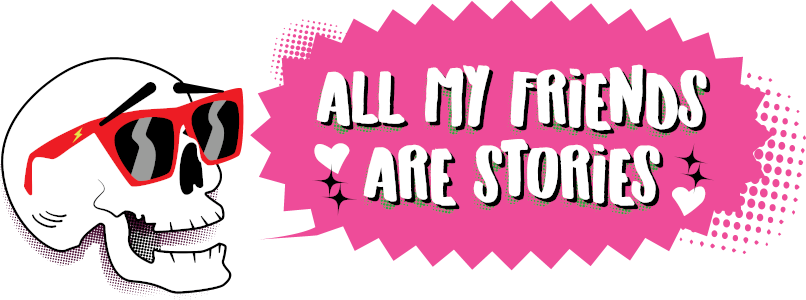I’ve been complimented on my setting descriptions (or asked if they are scripted) and I wanted to share my process for improvising flowery, poetic, sensory-heavy descriptions. This is a different process than what I use to communicate the layout of a space -- it's less about conveying practical information, and more about the performance and the atmosphere. This style isn't for everyone, and it's not a style that should be used in every description -- sometimes we just need to know how big the room is!
But I think of these kind of immersive, thematic descriptions as love letters to real places that have affected me. Most of these strategies are the same ones I use for writing, except that it all has to be done in advance and kept at the ready in format that doesn't lure you into reading a script, but also doesn't leave you hanging when you're on the spot.
When writing, you're able to
- look up words, double check your vocabulary
- search for synonyms to avoid redudant language
- plan out scenes before you write them (you know what's coming!)
- flesh out or refine metaphors after you write them
When you're improvising in a collaborative setting, you don't know what's coming, you don't usually have time to look anything up, and you can't edit afterwards. If you're hoping to perform these descriptions in a similar way to how writers write them, you have to do it without any of the tools they use! I often hear from people that they feel unprepared, and face a few main stumbling blocks:
- lack of inspiration, not sure what to say to evoke atmosphere
- difficulty finding the right words
- feeling like their descriptions havee nothing to do with the story, like it pulls people out of the story or stops the momentum
1. Forage your ingredients in the wild (bask in your environment)🏖️
When I’m working on a show that takes place in a specific environment, I like to go that environment and spend some time there with a notebook. I just sit and write down everything I see, feel, hear, smell — anything that catches my attention, or if anything reminds me of anything else. This is a meditative process. Sometimes I do voice notes, but I enjoy the act of writing my disjointed thoughts and observations. I check in with all my senses over and over again. Here’s an example of what I wrote when I was at the beach:

cold air from water, uncomfortable heat where my clothing is dark
tree growing out of sand, sand caught in the bark
kids laughing from across the lake — can’t hear what they’re saying but the high notes seem to carry
pressing heels into the sand, sharp and soft
waves sound like highway traffic
water looks like glitter, or a metallic blanket, further out it moves like those parachutes we played with as kids
ducks bob on the waves
I write down snippets of conversation I overhear, anything that happens (even if it’s a piece of litter floating by, or a bug) if it interests me — and when I’m in this mode, everything interests me. I will usually do this as many times as I can because I find it creatively inspiring, and also it’s just a really nice time. And this doesn't only apply to beautiful places: if I find myself in a warehouse, a dreary office, an uncomfortably loud bar, I'll sometimes take a second to jot down notes (even if it's just in my phone) about details I notice. Fun fact: this started as a grounding exercise my therapist gave me to avoid panic attacks, but now I just do it because it's a good time :)
Update: I was flipping through the book Story is a state of mind, by Sarah Selecky and it described a similar exercise called "Deep Noticing". I like that phrase!
2. Source any ingredients you couldn't forage (build vocabulary) 📖
When you’re improvising, you don’t have time to bust out a thesaurus and dictionary. I will literally google “cool ocean words” or look up a setting work on https://relatedwords.io/ and write down everything I like the sound of. I try to come up with synonyms, because I don’t like repeating myself too many times.
I almost always end up learning new words! It’s fun! pelagic
And then, IMPORTANTLY, I look up the pronunciation of words I’m not sure of (the way I had to practice “hadal” 100 times to avoid saying hay-dell — it’s high-dle). I still mispronounce words constantly (my plight as a reader!) but I try to minimize it.
Results from Googling “cool ocean words” + relatedwords.io/ocean

brine
marine
dead zone
barnacle
estuary
inlet
tide
coast
shore
kelp
sandbank
abyssal zone
water’s edge
pelagic
saline
refraction
archipelago
3. Consider GOOD SOUP past (read poetry) 🧑🎨
I read poetry, or poetic prose, that deals with the setting. I love reading poetry, so this is just a lovely way to interact with it. I often write out my favourites, or just save a copy in a folder and highlight my favourite turns of phrase or ideas. I add my favourite words to my Big List Of Words (soon to be WORD SOUP). I love thinking about how poets draw connections between ideas and it gets me thinking about how I would draw connections between the setting and the ideas I want to convey.
Here is a poem that inspired my role in Wayward Autumnal.
Pretty, by Stevie Smith
Why is the word pretty so underrated?
In November the leaf is pretty when it falls
The stream grows deep in the woods after rain
And in the pretty pool the pike stalks
He stalks his prey, and this is pretty too,
The prey escapes with an underwater flash
But not for long, the great fish has him now
The pike is a fish who always has his prey
And this is pretty. The water rat is pretty
His paws are not webbed, he cannot shut his nostrils
As the otter can and the beaver, he is torn between
The land and water. Not ‘torn’, he does not mind.
The owl hunts in the evening and it is pretty
The lake water below him rustles with ice
There is frost coming from the ground, in the air mist
All this is pretty, it could not be prettier.
Yes, it could always be prettier, the eye abashes
It is becoming an eye that cannot see enough,
Out of the wood the eye climbs. This is prettier
A field in the evening, tilting up.
The field tilts to the sky. Though it is late
The sky is lighter than the hill field
All this looks easy but really it is extraordinary
Well, it is extraordinary to be so pretty.
And it is careless, and that is always pretty
This field, this owl, this pike, this pool are careless,
As Nature is always careless and indifferent
Who sees, who steps, means nothing, and this is pretty.
So a person can come along like a thief—pretty!—
Stealing a look, pinching the sound and feel,
Lick the icicle broken from the bank
And still say nothing at all, only cry pretty.
Cry pretty, pretty, pretty and you’ll be able
Very soon not even to cry pretty
And so be delivered entirely from humanity
This is prettiest of all, it is very pretty.
In this poem, Stevie Smith brings together graphic, violent descriptions of nature, and sets them primly right next to beautiful, idyllic ones. It gives "pretty" an ominous air and aligns with the feminist themes of Wayward Autumnal.
4. Study your recipe thoroughly (research)🤓
I’m a nerd. If I’m going to be talking about a setting, I’m going to be learning about that setting. And when you learn about a setting, metaphor JUMPS at your. Like, for example, when doing research for Eldritch Disco, I learned that the deep sea is loud and I find that profoundly unsettling — perfect for my beach horror show! I’m also just a huge fan of dropping fun facts in my descriptions (more on that in a second!).
5. Prep your ingredients (build metaphors)🏗️
Once I have all this inspiration and these building blocks, I start to incorporate them into story. What am I trying to communicate with my descriptions? It’s not just a literal orientation in setting, it’s about tone, atmosphere, and theme. I do this primarily through metaphor.
Some metaphors are detailed explanations of natural phenomenon ("humans' sense of smell is weak compared to most, except when it comes to petrichor. Humans smell rain like sharks smell blood in the water. Something in us remembers what it is to beg the sky for water. When the rain hits the window, it sounds like an answered prayer), some are just verb choice ("the rain drummed at the window" versus "the rain lashed at the window"), or through simile ("the rain hit the window like a whip hits a sinner").
Example: Golden Larches
I used one of the longer explanations in Wayward Autumanal, describing golden larches. I'd recently gone hiking amongst golden larches, and was struck by their beauty. Being among these shimmering, strange trees FELT significant, like it MEANT something. The gold everywhere reminded me of the opulence of cathedrals, and how religious paintings are often lit, with gold radiating out from a divine figure. I took notes in my phone about that feeling + association. Then I did some research on larches, and learned more about how rad they are. So when there was a moment in the story where I needed to introduce a new setting for an epic showdown, I was READY:
https://youtube.com/clip/UgkxNUkkKolrlK2abvs1uTlHK0enV_dG1ews?feature=shared


I naturally draw connections between when I see and what is on my mind. I find where people's mind goes with metaphor so fascinating -- it's like a Rorschach test. I'm Italian, so even though I'm not Catholic, I'm Catholic. I spent time in Italy, looking at specific kinds of art, and I see that art reflected in the world around me. Roslyn (the main character of Wayward Autumnal) is a puritan, and would not be exposed to this kind of art, so I try to temper my associations and bring in some of the parts she would relate to more. When I'm taking notes on a setting, I jot down wherever my mind goes, but when I’m performing a setting, I try to draw connections between the setting and the themes of the story.
6. Make WORD SOUP 🍲
At this point, the setting is at the front of my mind, I have a huge vocabulary on the topic and I’m bursting with ideas of how various aspects could connect with the story. For the next step, I take a piece of paper and I write down a bunch of words I really like, turns of phrases, etc and keep them near me when I’m performing. That way if I’m on a roll and don’t want to stop to think, I can take a spoonful from my WORD SOUP and keep on going.
Example: Deep sea
In Eldritch Disco, I knew a lot of the horror was centered around the vastness of the ocean mixed with the claustraphobia of being deep under water. https://www.threads.net/@gnome_anne/post/C4eLZMoPpRt?hl=en In that scene, my WORD SOUP included these phrases that informed that monologue:
- deep ocean LOUD
- ship engine, whale songs, seismic tremors
- creak of Hadal bones
- shuck you from your breath
5. Garnish with callbacks!🫏
And this is the part that is unique to improv/TTRPG: the callback. As people are talking about the setting, or even making references that align with the kinds of thing I already have in the SOUP, I write little notes on my WORD SOUP. In the last example, Connie had previously mentioned that they do not think of the ocean (I quickly noted as they said that ”you have never thought of the deep sea, but it has thought of you”) and that their main association with water was playing at the shoreline or taking a bath, so I noted those two examples as well.
In my experience, the more time passes between when another players says something like that and when you reference it, the harder it hits. Especially in the opening scene, I am FEVERISHLY taking notes on all the metaphors, backstory lore, references, bits etc so that I can weave them into my descriptions later.
This world exists only for the characters, so everything about them should influence the world. Just like the waves remind me of traffic because I grew up closer to a highway than the ocean, we interact with our environments in ways that say as much about us as it does about them.
With all those delicious ingredients blended together, presented however makes sense to your brain, you have
And perhaps most importantly, GO EASY ON YOURSELF! Don't hold yourself to an impossible standard, whether that's comparing your descriptions to your own ability when you write or to another performers. ENJOY YOUR SOUP!
Bon Appétit!
also watch my shows here: Zepotha (80s teen slasher with demonic horror vibes), Eldritch Disco (queer disco cosmic horror), Wayward Autumnal, (pastoral/folk horror with lots of feminine rage and monstrosity), Beach Episodes! (a light-hearted, low-stakes D&D campaign), Be Gay Do Crime (silly and dramatic, gay af D&D campaign).
